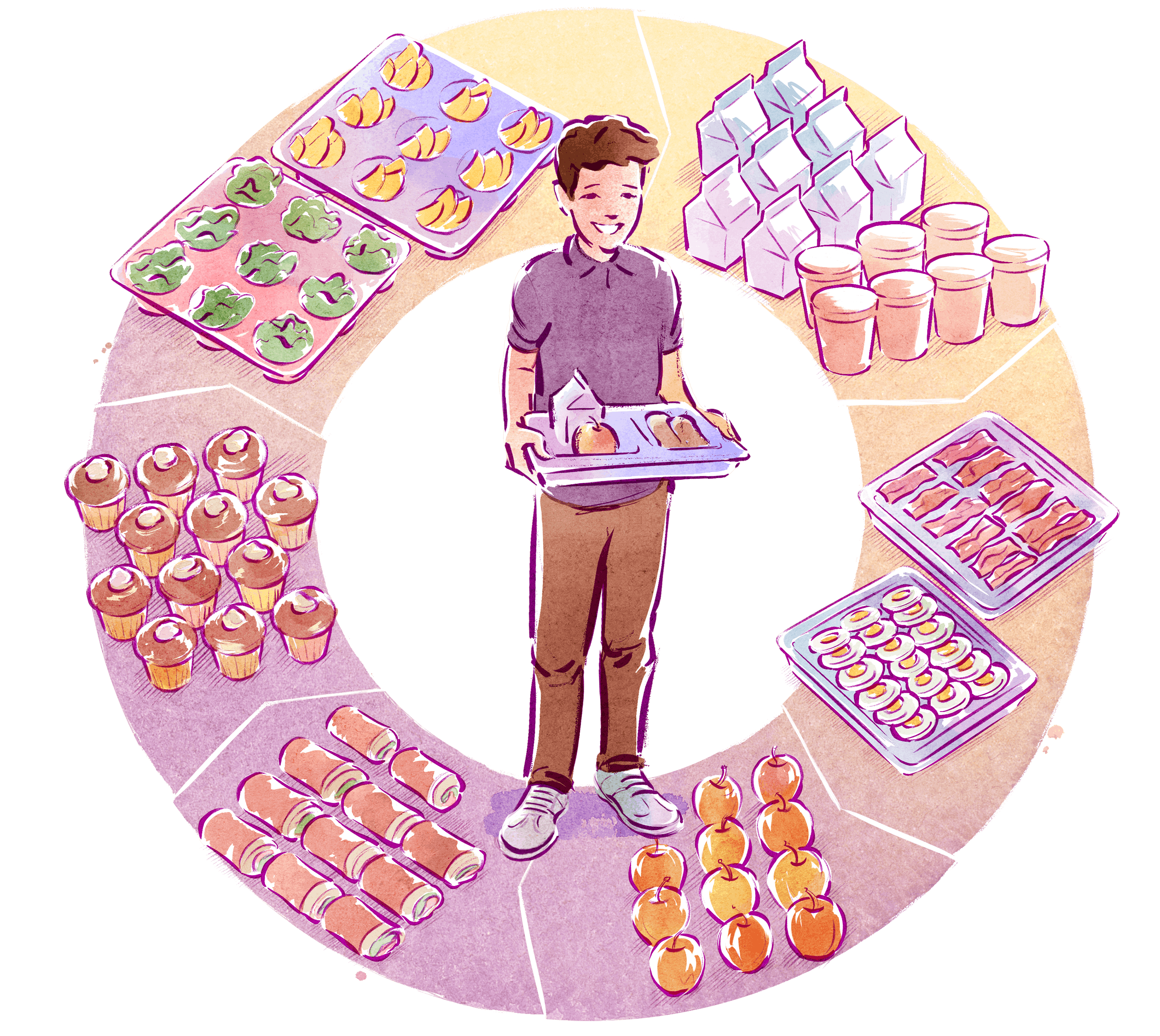5 Practices for Efficient School Cafeteria Operations
Managing the school cafeteria can be chaotic, especially if you do not have a plan. By implementing the following five practices, you can help to ensure the smooth operation of your cafeteria:
1. Rearrange the Seating Plan
A significant part of school cafeteria management is ensuring that there is enough space for students to eat while maintaining a safe distance from one another. You may need to rearrange your cafeteria's seating plan to do this.
This could involve setting up additional tables and chairs or removing some furniture to create more space. You may also need to stagger lunchtimes to avoid overcrowding.
2. Enforce Strict Food Safety Guidelines
Enforcing strict food safety guidelines is vital for students' health and safety. Schools should ensure that all food preparation areas are clean and debris-free.
All utensils and surfaces that come into contact with food should be properly sanitized. In addition, food preparation areas should be well-ventilated to prevent the spread of bacteria and other contaminants.
It is also essential to ensure that staff members wash their hands regularly and follow proper food handling procedures.
Improper food handling can lead to foodborne illness, so students, staff, and cafeteria workers must be aware of the potential risks and how to prevent them.
Another way to prevent the spread of illness in the school cafeteria is to set up a dedicated handwashing station. The station should have soap, water, and paper towels.
Schools must train staff on properly using the handwashing station and encourage students to wash their hands before and after eating.
3. Allow Pre-Ordering
Long cafeteria lines can be problematic since they can cause overcrowding and increase the risk of illness transmission. To avoid this, schools can allow students to pre-order their food.
Pre-ordering can help reduce congestion in the cafeteria and make lunchtime more efficient. It also allows students to customize their meals and choose healthier options.
Schools can use different methods to implement this. One option is to set up a dedicated website or app for ordering food. Alternatively, the school can have students fill out an order form before lunchtime to submit to the cafeteria staff.
Whatever system you choose, it is important to ensure that it is easy for the students and the cafeteria staff to use and understand.
4. Increase Ventilation
When hundreds of people eat in the same space, there is a greater risk of illness-causing bacteria and viruses. Therefore, it is important to ensure that the school cafeteria is well-ventilated to reduce this risk.
Good ventilation can help remove contaminants from the air and prevent the spread of disease. There are a few ways to increase ventilation in the school cafeteria, such as opening windows or doors, using fans, or installing an air purifier.
It is also important to ensure that the ventilation system is regularly maintained and cleaned.
5. Use Alternate Lunchtime Arrangements
Suppose your school cafeteria isn't spacious enough to accommodate all the students at once, or you don't have the resources to install ventilation or buy extra furniture. In that case, you can use alternate lunchtime arrangements. One option is to have students eat in shifts. Or, you can allow them to eat in their classrooms.
Another option is to set up a buffet-style school lunch program where students can serve themselves. It helps reduce congestion and makes it easier for students to socialize while they eat.
How To Implement Efficient School Cafeteria Operations
Curating or gathering ideas to improve school cafeteria operations is the easier part — implementing those ideas is where the real work begins. Here are a few ways to make the process more efficient:
Make a Plan and Delegate Tasks
Start by making a list of the areas that need improvement and then delegate tasks to individuals or teams. It will help ensure that all cafeteria needs are met and that no one person is overwhelmed with too much work.
For instance, if you're planning to change the layout of the cafeteria to make it more spacious, the tasks will include:
- Moving furniture
- Creating a new floor plan
- Implementing the new layout
Likewise, if you're aiming to reduce food waste, tasks might include:
- Training staff on portion control
- Encouraging students to take only what they will eat
- Working with suppliers to reduce packaging
Once you've listed the tasks, assign them to relevant individuals or teams in your school.
Create a Budget
Working with a limited budget can be challenging, but it's a good idea to create one anyway. A budget will also help you stay on track as you work to implement changes in the cafeteria.
It can be helpful to break down the budget into categories so that you can easily see where the money is going.
Use Technology To Streamline the Process
Be willing to let go of old methods that aren't working and adopt new technologies that can help streamline the process.
For example, many schools are now using online ordering systems for their cafeterias. An online system allows students and parents to place orders in advance, saving time during lunch periods.
Online ordering can also help you track inventory and ensure that food is fresh and hasn't been sitting out for too long.
Get Feedback and Make Adjustments
Finally, it's essential to get regular feedback from students, staff, and parents. It will help you gauge how well your changes are working and identify areas that need further improvement.
Final Words
Finding and implementing the best school cafeteria practices is more pressing than ever. With foodborne illnesses and childhood obesity rates on the rise, it's important to do everything to promote healthy eating habits in our schools.
But making changes to school cafeterias isn't easy. It requires careful planning, task delegation, and a willingness to try new things. However, by following these steps, you can improve the school cafeteria procedures to ensure student health, reduce food waste, and save money.
